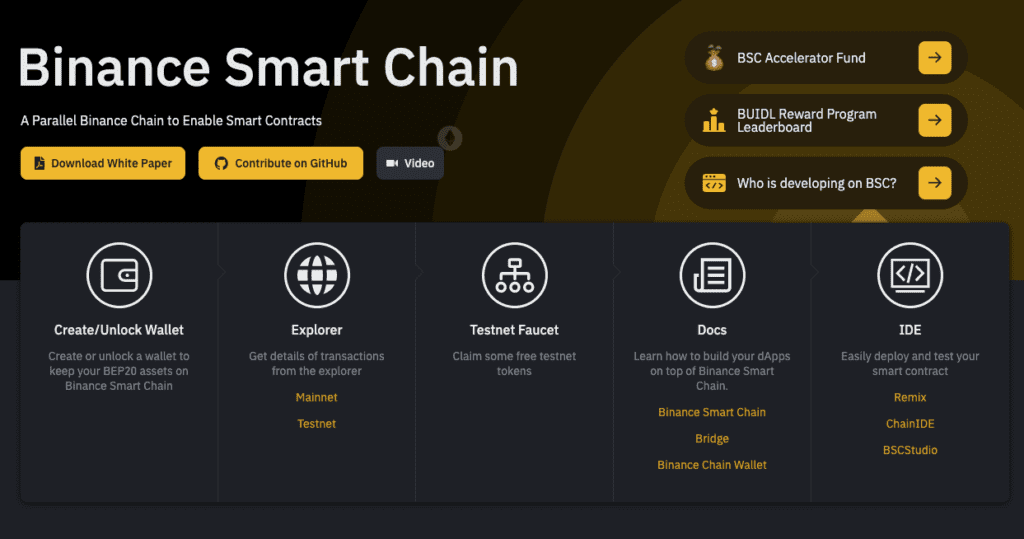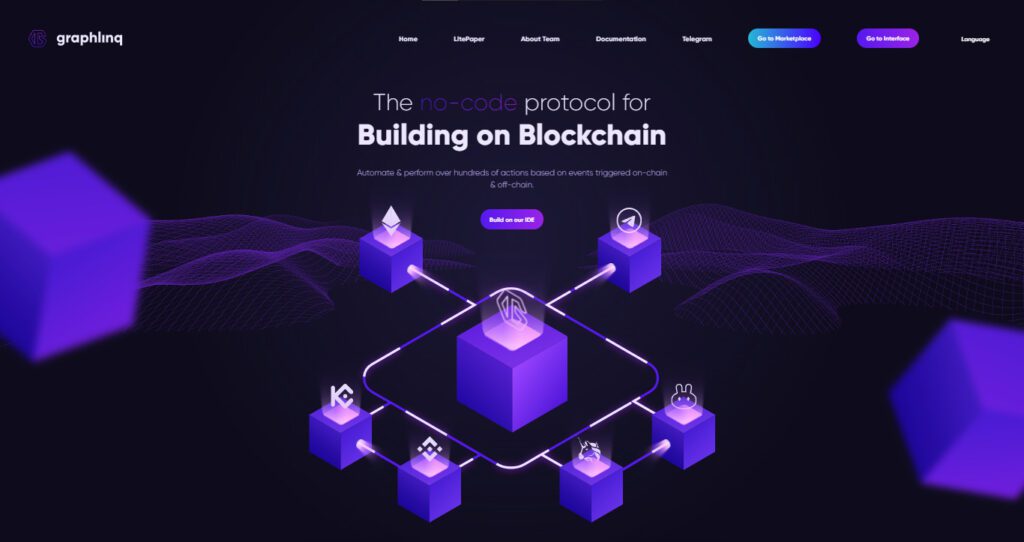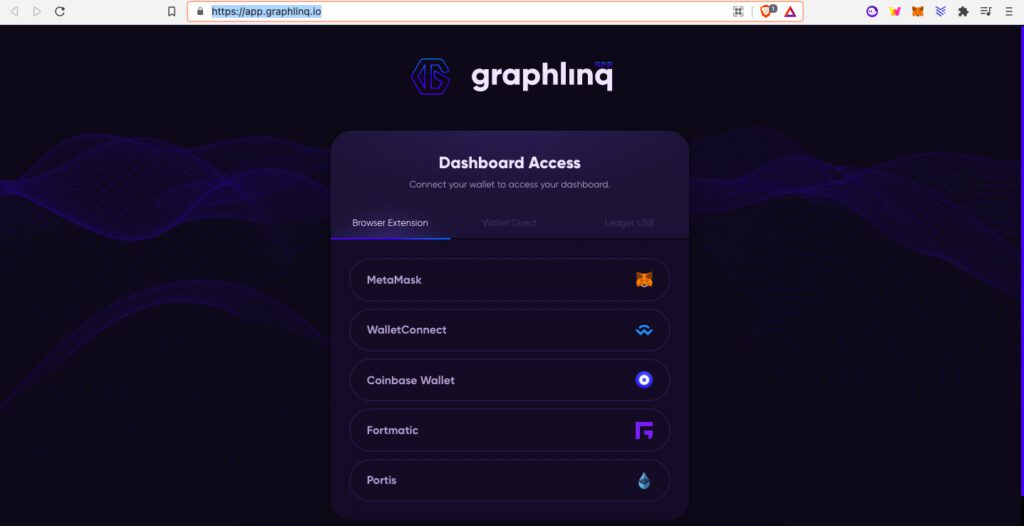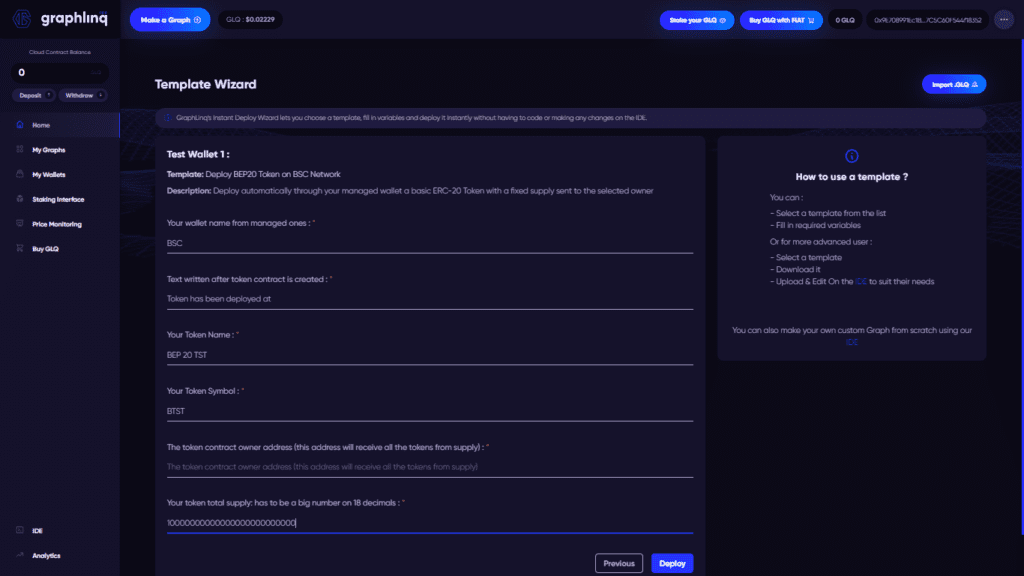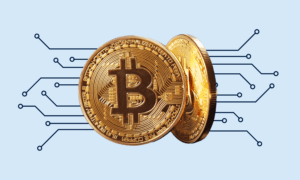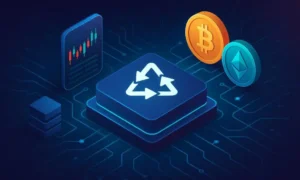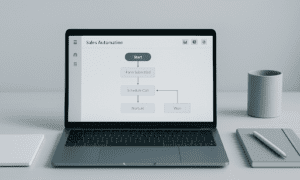In this article, we will explore how to create your very own BEP 20 token with the help of GraphLinq without any coding required, only using three steps.
So you want to create your own token for a groundbreaking project idea that you have. But you have no clue where to start. If that is your case — you’ve come to the right place! We will need metamask and GLQ to build our cryptocurrency token in easy steps. You can find a step-by-step guide to buy $GLQ here. But before getting down to the details — let’s take a step back and take a closer look at the difference between Binance Smart Chain and Binance Chain and how together they make the Binance Ecosystem. We will also learn what BEP-20 tokens are on a deeper level.
The Binance Ecosystem
With the release of so many updates and the growing popularity of the Binance Ecosystem, it has become challenging for a crypto novice to keep up with the new developments. Binance is the world’s largest and most popular cryptocurrency exchange founded by Changpeng Zhao (CZ).
Over the course of its existence, Binance has launched two chains, namely Binance Chain and Binance Smart chain: the former being their first chain launched two years after the company’s genesis in 2017. On the other hand, Binance Smart Chain (BSC) was launched to solve scalability and smart contract functionality-related constraints of the Binance chain.
What is Binance Smart Chain (BSC)?
Binance Smart Chain was developed to run alongside the Binance Chain instead of being its replacement. Though, It invites the obvious question, “What was the need for two parallel chains?”
Binance Chain was launched to facilitate fast, non-custodial trading. Due to its frustrating scalability and programmability constraints, a need for a parallel chain that could run even if the Binance chain went offline and could provide smart contracts functionality arose and thus came Binance Smart Chain. This new blockchain came equipped with the Ethereum Virtual machine (EVM) compatibility and smart contract functionality. EVM compatibility enabled the Ethreum native Dapps and tools to port over to the Binance Ecosystem from Ethereum. Essentially, it means that Dapps like Metamsk can be conveniently configured to work with BSC- find how to use Metamask with Binance Smart chain.
What is BEP 20 Token Standard?
Just like Ethereum’s ERC 20, Binance’s BEP 20 is essentially a technical standard for tokens that define a standard list of rules that every BEP 20 – compatible token has to adhere to function correctly on the Binance Smart Chain.
Due to BEP20s technical specification for Binance Smart Chain and the flexible format, it affords developers the freedom to launch a vast array of tokens with unique functionalities. These represent utility tokens, security tokens, stablecoins, and another category of tokens, known as “Peggy coins,” which are built using the BEP 20 Standard. Over 1,747,580 different BEP 20 tokens exist on the BSC network (during the time of writing — January 10, 2021).
So how do I create a BEP 20 token?
Now that we know what BEP 20 tokens are and how they work, let’s see how we can build and deploy our token. Creating BEP 20 token on GraphLinq is super convenient and can save up to hours. You can issue your BEP 20 token only with a few clicks on the GraphLinq App directly through the interface or by modifying the template graph directly on the Integrated development environment (IDE) and executing it.
Before we get started, there are a few things to do in preparation. You will need one of the following wallets: Metamask, Coinbase, Fortmatic, Portis, and Wallet connect. For this tutorial, we will use Metamask. Find how to set up your Metamask wallet here.
How to set up Metamask?
To interact with the blockchain, you need to install the Metamask browser extension(add-on) on one of the following browsers: Chrome, Firefox, Opera, and Brave browser. Metamask allows you to store BEP 20 tokens due to its similarity with ERC 20.
We will use Chrome Browser in this article.
Step 1. Go to the Metamask website.
Step 2. Click “Get Chrome Extension” to install Metamask.
Step 3. Click “Add to Chrome” in the upper right.
Step 4. Click “Add Extension” to complete the installation.
A fox log will appear in the “Extensions” menu on the upper right-hand corner of your browser window.
You will also need some $GLQ balance in your wallet. If you are unsure how to do it, we have broken it down into easy steps! Now that’s out of the way, let’s jump right into building our very own BEP 20 token in under a minute.
Step 1
The first thing we need to do is .head to GraphLinq Dashboard Interface. There you will get access to GraphLinq’s Dashboard, where you can connect your Metamask Wallet to the Dashboard.
Step 2
Once the wallet is connected, Graphinq’s Template wizard will appear. From the Sidebar, go to “Wallets” and create a new managed wallet on GraphLinq. Give it a name and select Create wallets in the top right corner of the Interface. Ideally, you want to name this something relevant to your project. A pop-up with your wallet key will appear. Make sure to save it someplace safe as it won’t be available again.
Step 3
Once you are through it, head back to Home and name your graph in the Template Wizard. GraphLinq provides a wide array of templates to choose from. But for this tutorial, we will Select “Deploy BEP 20 token on BSC Network” in the Templates Menu.
In this final step, you will need to select “Next” and fill in the required fields with token information and click on “Deploy.” Make sure your account “Contract Owner Address” is the same address displayed in the top right corner of the Interface.
Summary
Following completion of the above steps, you will know how to launch a BEP20 token on Binance Smart Chain using GraphLinq’s Inbuilt Interface in just three simple, easy steps without using any code or having a coding background. GraphLinq’s easy-to-use Interface enables Blockchain enthusiasts or anyone to create their own token, saving on time and development costs.
Conclusion
Congratulations on successfully creating your very own token/coin on the BSC network in under a minute using just three steps!
You can also create your own Bep 20 token on BSC here.
Connect with GraphLinq:
Website: https://graphlinq.io/
Telegram: http://t.me/graphlinq
Twitter: https://twitter.com/graphlinq_proto
Medium: https://graphlinq.medium.com/


